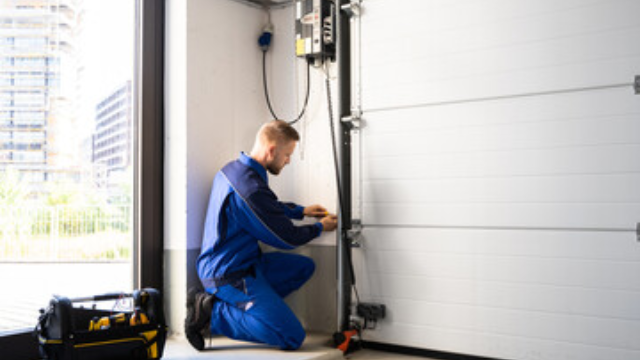Are you tired of a cold and drafty garage? Learn how to insulate your garage doors and keep the temperature comfortable year-round. In this guide, we’ll show you step-by-step instructions on measuring your garage door, choosing the right insulation material, preparing the door, installing the insulation panels, and sealing the installation. With these simple techniques, you’ll be able to transform your garage into a cozy and energy-efficient space.
Measure the Garage Door
To measure your garage door, grab a tape measure and follow these steps. Start by measuring the width of your garage door. Measure from one side of the opening to the other, taking note of the measurement in inches. Next, measure the height of the door by measuring from the top of the opening to the bottom. Again, record the measurement in inches. These garage door dimensions will be crucial when purchasing insulation materials.
Once you have the measurements, you can now determine the insulation thickness needed for your garage door. Insulation thickness is an important factor in maximizing energy efficiency and reducing noise. The thicker the insulation, the better it will be at preventing heat transfer and sound transmission.
When choosing insulation thickness, consider factors such as climate, desired energy efficiency, and noise reduction. Thicker insulation is generally recommended for colder climates, as it provides better thermal resistance. Additionally, if you use your garage for activities that generate noise, such as woodworking or playing music, thicker insulation can help minimize the sound that escapes.
Choose the Right Insulation Material
Now that you have measured your garage door and determined the insulation thickness needed, it’s time to choose the right insulation material. When selecting insulation for your garage door, it is important to consider the benefits of insulating garage doors and avoid common mistakes that can compromise the effectiveness of the insulation.
Insulating your garage door offers several benefits. Firstly, it helps to regulate the temperature inside your garage, preventing extreme heat or cold from entering. This is especially important if your garage is attached to your home, as it can help to maintain a comfortable living environment. Additionally, insulation can reduce noise transmission, making your garage a quieter space. Insulation also helps to improve energy efficiency, reducing heat loss in the winter and heat gain in the summer. This can lead to energy savings and lower utility bills.
When choosing an insulation material, it is crucial to select one that is suitable for garage door applications. Common options include foam board insulation, reflective foil insulation, and fiberglass insulation. It is important to consider factors such as R-value, which measures the insulation’s ability to resist heat flow. Additionally, the insulation material should be durable and able to withstand the elements.
Avoid common mistakes when insulating your garage door. Ensure that you properly seal any gaps or cracks before installing the insulation. This will prevent air leakage and maintain the effectiveness of the insulation. Additionally, avoid compressing the insulation material, as this can reduce its insulating properties. Finally, follow the manufacturer’s instructions for installation to ensure proper results.
Prepare the Garage Door
How can you effectively prepare your garage door for insulation? Properly preparing your garage door is crucial for achieving optimal insulation and weatherproofing. Before proceeding with insulation, it is essential to perform routine garage door maintenance to ensure its functionality and durability. Start by thoroughly cleaning the door to remove any dirt, debris, or cobwebs that may hinder the insulation process. Inspect the door for any damages such as cracks, gaps, or loose parts, and make the necessary repairs. Additionally, check the weatherstripping around the edges of the door and replace it if worn or damaged.
To maximize insulation effectiveness, consider applying weatherproofing techniques to your garage door. Install a bottom seal to prevent drafts and keep out pests. This seal should be durable and able to withstand temperature changes. Apply weatherstripping to the sides and top of the door to create a tight seal when closed. Foam insulation panels can be added to the interior surface of the door to further improve thermal insulation.
Install the Insulation Panels
Start by measuring the dimensions of your garage door to ensure a proper fit for the insulation panels. Installing insulation panels on your garage door can provide numerous benefits, such as improved energy efficiency, noise reduction, and temperature regulation. To begin the installation process, gather all the necessary materials, including the insulation panels, adhesive, measuring tape, utility knife, and a straight edge. Carefully measure the width and height of each panel, making sure to account for any irregularities or obstructions. Next, mark the measurements on the insulation panels and use a straight edge to guide your utility knife as you cut the panels to the correct size. Apply adhesive to the back of each panel, following the manufacturer’s instructions, and press them firmly against the garage door. Take care to align the panels properly and ensure a secure bond. Repeat this process for each panel until the entire garage door is covered. Once the installation is complete, check for any gaps or areas that may need additional adhesive or adjustments. Insulating your garage door with panels is a practical and effective way to improve energy efficiency and create a more comfortable environment in your garage.
Seal and Finish the Insulation Installation
To ensure a complete and effective insulation installation, seal and finish the insulation panels using the following steps.
- Applying weatherstripping: Weatherstripping is an essential step in sealing your garage door and preventing drafts and air leakage. Measure the sides and top of the door frame and cut the weatherstripping to fit. Peel off the adhesive backing and press the weatherstripping firmly into place. Make sure to seal any gaps or cracks in the door frame to maximize insulation efficiency.
- Adding a garage door insulation kit: If you haven’t already, consider investing in a garage door insulation kit. These kits come with pre-cut insulation panels that are designed to fit standard garage door sizes. Simply attach the panels to the inside of the door using the provided adhesive or clips. Ensure that the panels are properly aligned and securely attached to provide optimal insulation.
- Sealing gaps and cracks: Inspect the entire garage door for any gaps, cracks, or holes that may allow air to escape or enter. Use caulk or expanding foam insulation to seal these openings. Apply the caulk or foam along the edges of the panels, as well as around any windows or hardware on the door. This will create a tight seal and enhance the insulation properties of your garage door.






